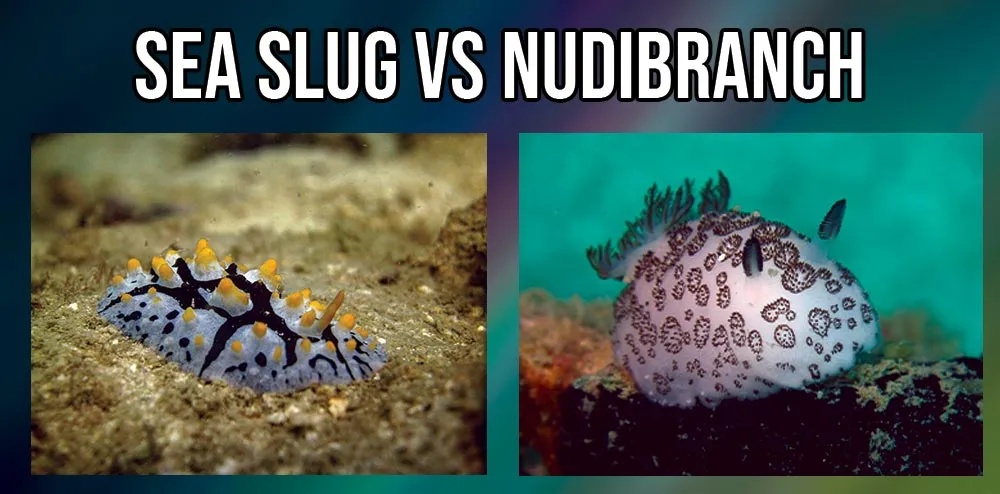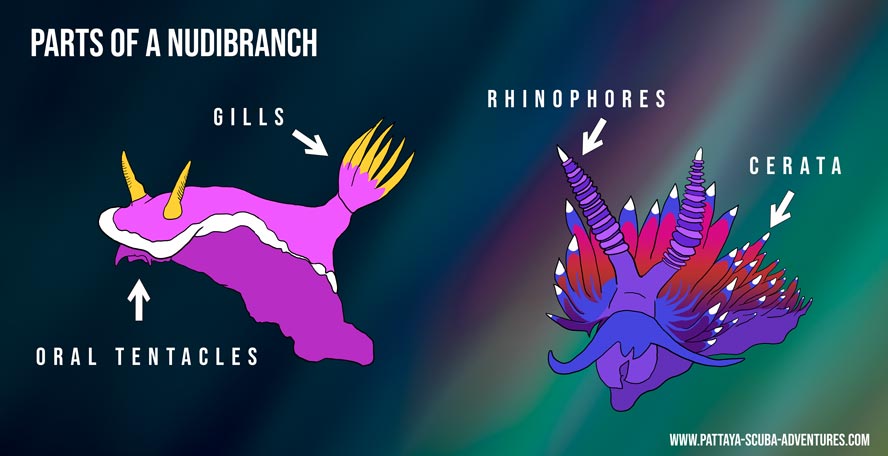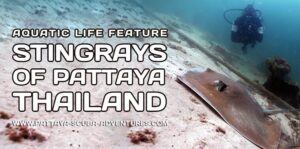Table of Contents
Introduction to Sea Slugs
Sea slugs are a diverse group of marine gastropod mollusks known for their vibrant colors, intricate patterns, and fascinating behaviors. They belong to the taxonomic clade Nudibranchia, which includes over 3,000 species found in oceans worldwide. Despite their name, nudibranchs are not all slimy; instead, many have a firm, often textured body.

Sea Slug Vs Nudibranch
While the terms “sea slug” and “nudibranch” are often used interchangeably, there are some distinctions between the two. Sea slugs encompass a broader range of marine gastropods, including nudibranchs, but also other groups like sacoglossans and pleurobranchs. Nudibranchs are a specific subgroup of sea slugs characterized by their exposed gills, often located on their backs, which give them their name (“nudibranch” translates to “naked gills”). Unlike other sea slugs, nudibranchs are renowned for their bright colors and intricate shapes, which serve as both camouflage and warning signals to predators.
How to Identify Nudibranches and Seaslugs
Parts of a Nudibranch: Nudibranchs exhibit a variety of features that aid in identification. These include their rhinophores (sensory organs resembling rabbit ears), oral tentacles (often located near the mouth), cerata (finger-like projections on their backs used for respiration and defense), and gills (either feathery structures on their back or in some species, located around the anus). Additionally, their coloration, patterns, and body shape can vary significantly between species, making each one unique.

Top 10 Most Common Nudibranch Species
Chromodoris annae
Flabellina affinis
Hypselodoris festiva
Phyllidia ocellata
Nembrotha kubaryana
Tambja nudibranch
Ceratosoma trilobatum
Glossodoris cincta
Doriprismatica atromarginata
Dendrodoris denisoni
Developing a Nudibranch Eye
Developing a “Nudihunter” eye involves understanding the ecological factors that influence nudibranch distribution and behavior. This includes knowing where to look for nudibranchs based on their preferred habitat, food sources, and bottom topography. Here are some key locations and potential indicators to help spot nudibranch species:
Rocky Reefs: Nudibranchs often inhabit rocky reefs, where they can find ample food and shelter among the crevices and caves.
Kelp Forests: Many nudibranch species are associated with kelp forests, where they feed on algae and other organisms that thrive in this habitat.
Mangroves: Mangrove ecosystems provide a diverse range of habitats for nudibranchs, including shallow waters rich in organic matter and detritus.
Sandy Bottoms: Some nudibranch species are found on sandy bottoms, where they camouflage themselves among the substrate or feed on burrowing organisms.
Corals and Sponges: Nudibranchs often feed on corals, sponges, and other sessile organisms, so areas with abundant coral reefs or sponge gardens are prime locations to search for them.
Currents and Upwellings: Nudibranchs may be more abundant in areas with strong currents or upwellings, which bring nutrient-rich water and increase food availability.
By understanding these habitat preferences and ecological relationships, divers and researchers can improve their chances of encountering nudibranchs in both familiar and unfamiliar dive sites.
Muck Diving as a Nudi Hunter
Muck diving is a specialized form of diving typically conducted in areas with sediment-rich or “mucky” bottoms, often found near shorelines, estuaries, or in sheltered bays. Unlike the vibrant coral reefs associated with traditional tropical diving, muck diving sites may appear barren at first glance, but they are actually teeming with a diverse array of marine life, including many elusive and cryptic species like nudibranchs.
For a Nudi Hunter, muck diving areas offer unique opportunities to explore and discover a wide variety of nudibranch species. Here’s how they might approach muck diving to find these colorful sea slugs:
Understanding Muck Diving Sites: Nudi Hunters familiarize themselves with the characteristics of muck diving sites, which often include sandy or silty bottoms, scattered patches of debris or rubble, and occasional patches of vegetation or artificial structures. These areas may not initially seem appealing, but they provide important habitats for a range of marine organisms, including nudibranchs.
Using Search Techniques: Nudi Hunters employ careful observation and systematic search techniques to locate nudibranchs in muck diving environments. Because many nudibranch species are small and well camouflaged, they may blend in with their surroundings, making them challenging to spot. Hunters may use slow, deliberate movements and focus on searching specific microhabitats where nudibranchs are likely to be found, such as around patches of algae, sponge, or soft coral.
Spotting Nudibranch Indicators: Experienced Nudi Hunters learn to recognize subtle indicators that nudibranchs may be present in a muck diving area. These indicators can include the presence of their preferred food sources, such as sponge colonies, hydroids, or algae, as well as evidence of recent nudibranch activity, such as egg ribbons or feeding trails. By paying attention to these clues, hunters can narrow down their search and increase their chances of finding nudibranchs.
@pattayascubaadventures Are you a Sea Slug Lover? Here at scuba adventures we adore sea slugs and diving everyday to look for them. #nudibranch #seaslug #underwater #scubadiverlife #pattaya #thailand ♬ original sound – Pattaya Scuba Adventures
Night Diving: Night diving in muck diving areas can be particularly productive for Nudi Hunters, as many nudibranch species are nocturnally active and may emerge from their hiding places to feed under the cover of darkness. Using specialized dive lights and focusing on areas with high biodiversity, hunters can encounter a greater diversity of nudibranch species than during daylight dives.
Recording Data: As citizen scientists, Nudi Hunters contribute valuable data to our understanding of nudibranch distribution and behavior. By recording observations of the species they encounter, along with environmental data such as depth, substrate type, and water temperature, hunters help researchers track population trends, identify important habitat areas, and document rare or new species.
Overall, muck diving offers Nudi Hunters a rich and rewarding opportunity to explore the hidden treasures of the underwater world and contribute to our knowledge of these fascinating sea slugs. With patience, perseverance, and a keen eye for detail, hunters can uncover a wealth of nudibranch diversity in even the most unlikely of muck diving sites.
Why not join a dive trip with us and say you are a Nudi Lover and we can take you for guided dive looking for Sea Slugs
















